Fansmanship Podcast Episode 217 – Chris Sylvester and Brint Wahlberg
It’s another podcast episode! Cal Poly basketball teams are at the Big...
The 2017 Cal Poly Rodeo will be known for bucking a Friday night rainout and rebounding for a hugely successful Saturday finals.
The rodeo venue and ensuing set-up at Spanos Stadium was almost as much of a story prior to the rodeo as the event itself. Rodeo coach Ben Londo and the students on the Cal Poly Rodeo Team began planning just about a year ago to the historic move from the rodeo grounds at Cal Poly to the 11,000-plus seat Alex G. Spanos Stadium.
The massive effort it took to get the surface in and out of the stadium has been pretty well-documented. The Tribune’s Joe Johnston did a nice time lapse here.
Here are two images. One was taken Saturday night during the rodeo. The second was less than 48 hours later.
Saturday night:
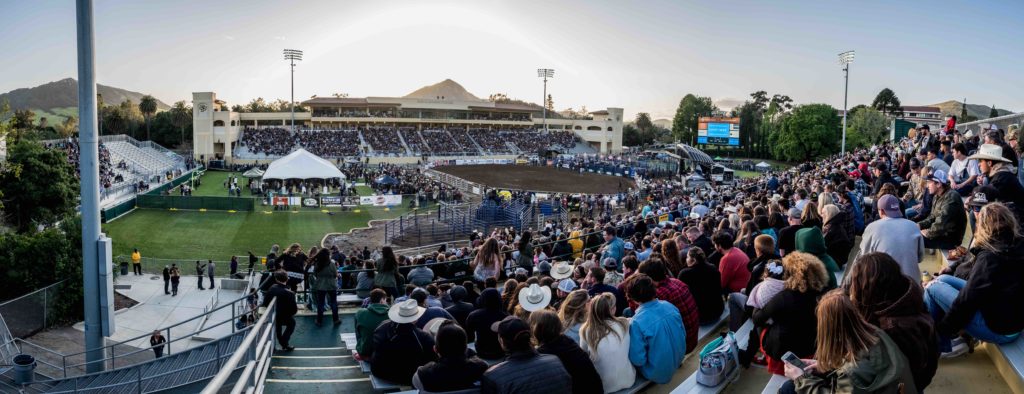
Spanos Stadium was in good shape by Saturday evening. By Owen Main
Was truly impressed by how the field at spanos looked after being covered for 72 hours. Here's what it looked like this afternoon. pic.twitter.com/z9bhaAXHM7
— fansmanship (@fansmanship) April 10, 2017
This was the second rodeo I’ve covered. Having done it before was absolutely helpful in thinking about the shots I wanted to get and my favorite events — though they’re all pretty action-packed. The action in a rodeo is some of the most intense of any sport or event I’ve photographed.
Being a sports junkie growing up, I always watched bull riding when it came on ESPN or whatever regional sports network existed back then. Like my first hockey game, seeing a rodeo in-person for the first time was an eye-opener. Things moved faster. The participants were bigger, stronger, and tougher than I imagined. No matter the event, the synchronicity of contestant and animal still fascinates me.
If you haven’t seen a rodeo in-person, I definitely recommend you put it on the list of things to do next year. Just go and check it out.
Because I am a fan of systems and figuring out how things work, this particular event really peaked my interest. How were they going to get the arena and then the animals into the stadium and back out in such a short amount of time? Very carefully and very efficiently, it turned out.
Here’s a quick run-down of the events, from the perspective of someone who is a total novice to the sport. Here’s a link to something that describes it in more technical/complete terms than I ever could.
The riding events include bareback and saddle bronc riding and also bull riding. Bareback comes first and saddle bronc and bull riding were toward the end.
Falls are a part of riding and some of the moments captured in time, to me, really illustrate how much of a punishment these athletes have to be willing to take.
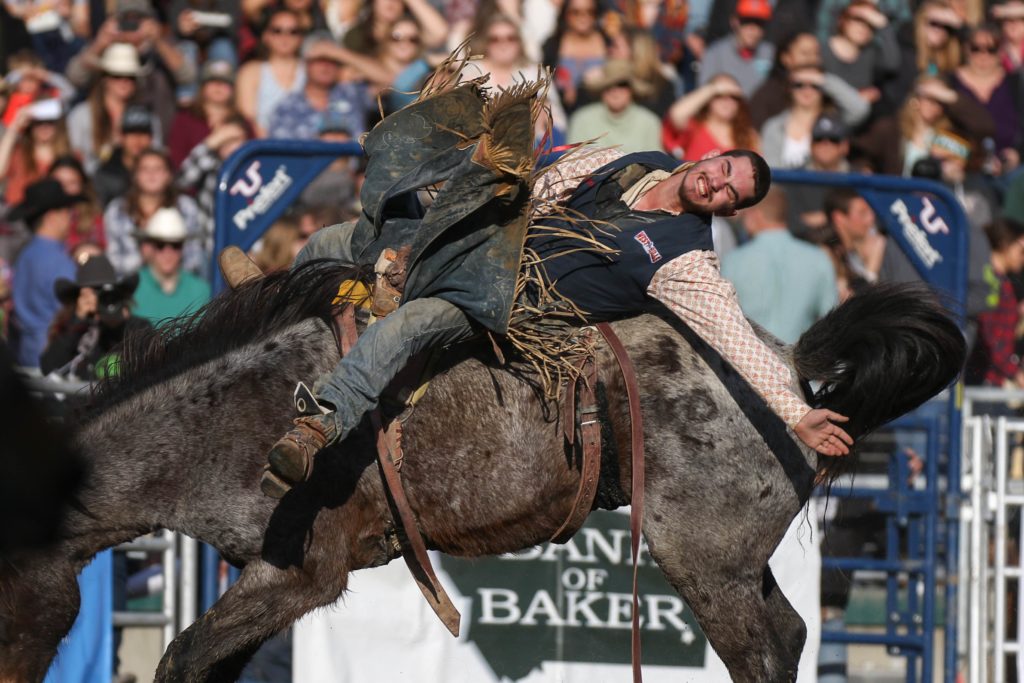
Hanging on tight! By Owen Main
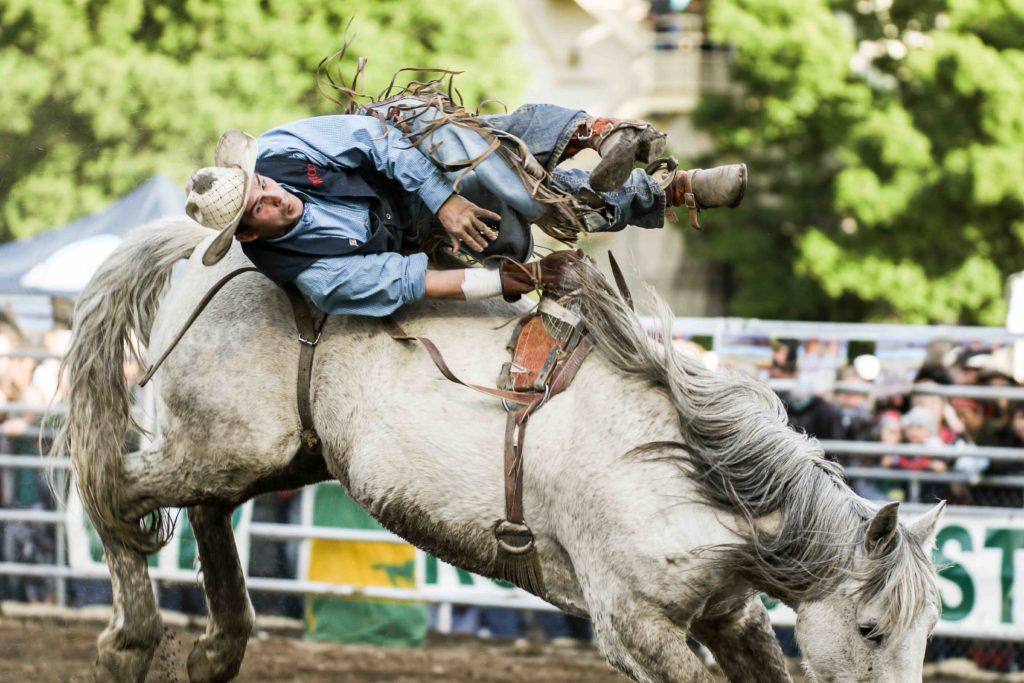
This is kind of how I feel most Wednesdays… . Also, hanging on tight. By Owen Main
Also called “bulldogging,” this is by far the toughest event. Participants have to catch a steer running full speed, jump off the side of the the horse, and basically tackle the steer. After getting the animal to stop, they must put it on its back. It looks hard and it’s probably harder than it looks.
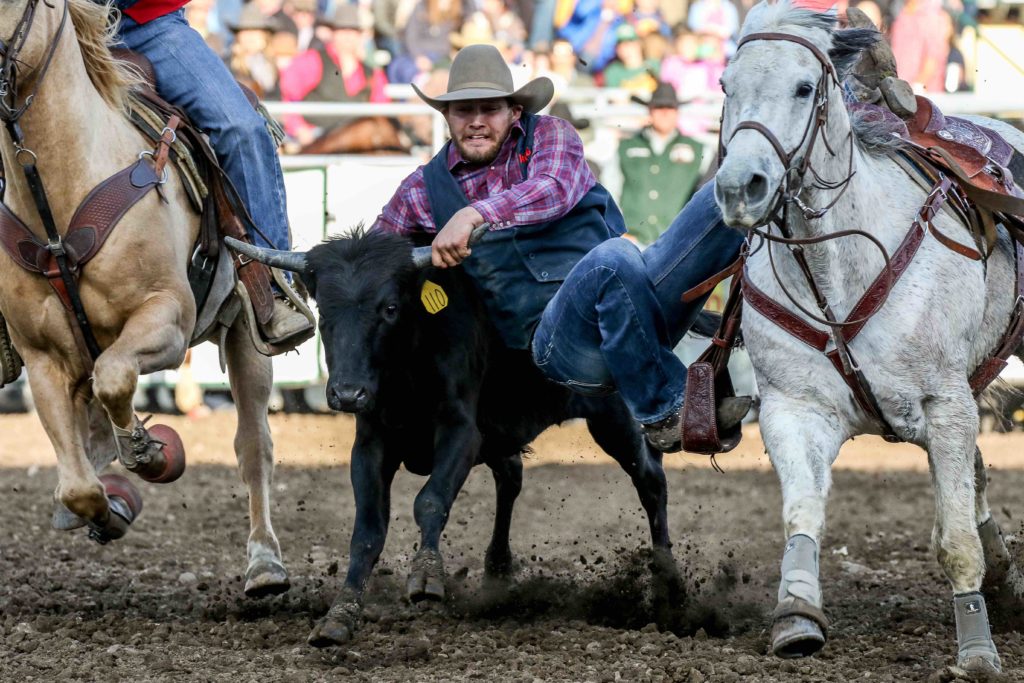
Sometimes I make this my screen saver just to remember how tough I am not. By Owen Main
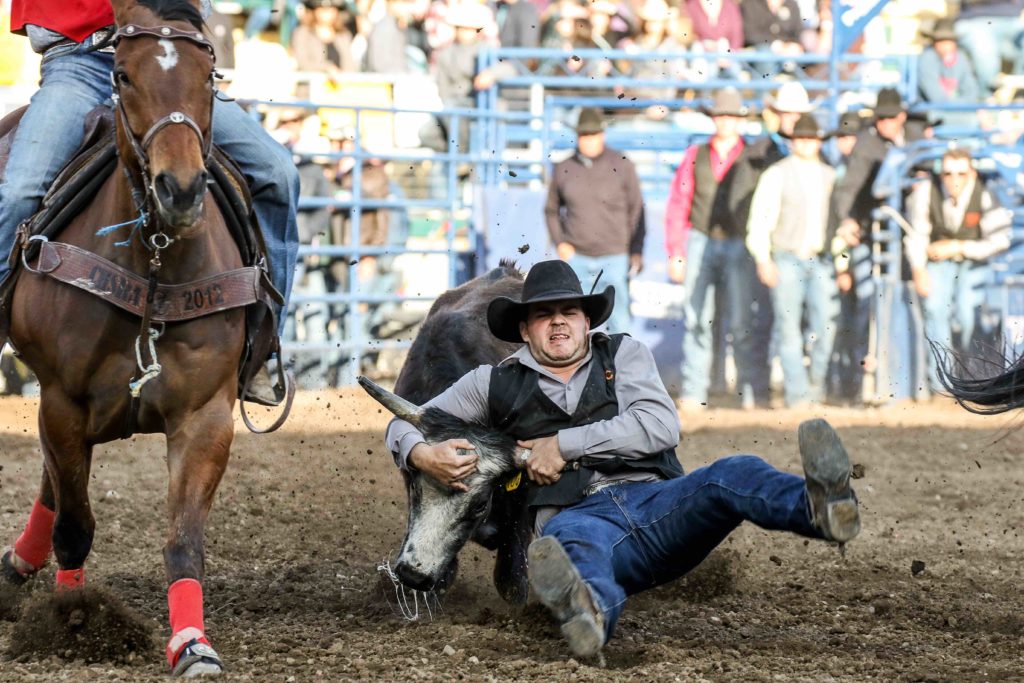
I feel like maybe the next Avenger should be a steer wrestler by day or something? By Owen Main
The breakaway roping is one of the women’s individual event. Basically, you lasso the cow around the neck and, when tension’s applied, the rope breaks away. You’ve gotta be handy with a lasso and confident to win this one. You’ll know a crowd hasn’t seen a lot of rodeos when they gasp at the sight of the first contestant’s rope breaking.
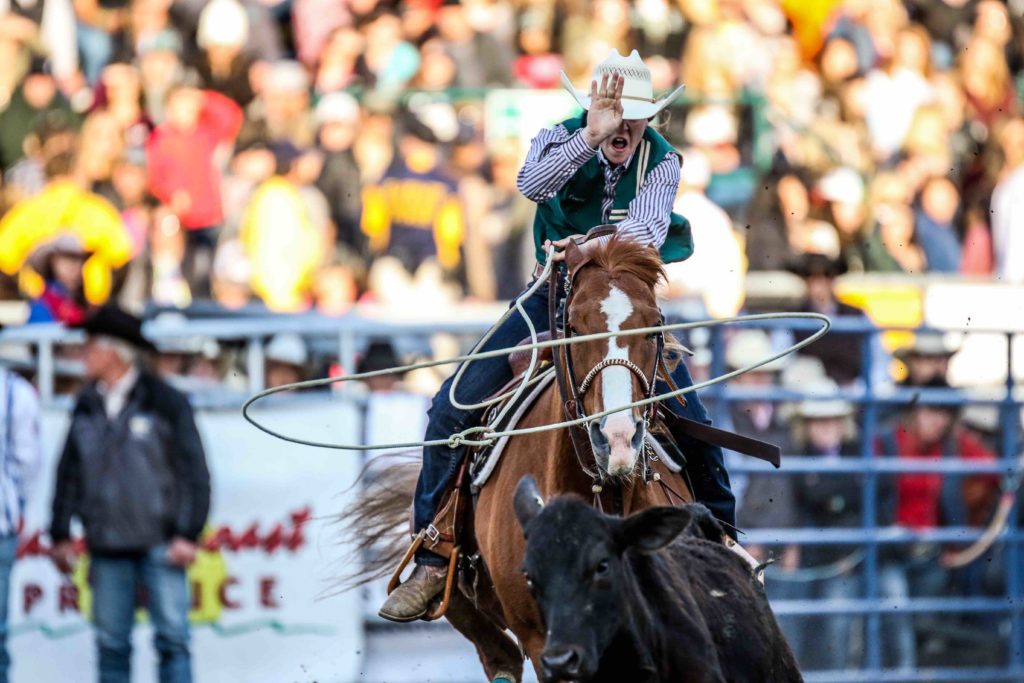
Seems like to be a good roper, you’ve got to be decisive. By Owen Main
This one starts like the breakaway roping, but the rope doesn’t break. A cowboy’s horse holds the rope steady and the calf in-place while the cowboy jumps off with another rope in his mouth. He basically cleans the calf off the ground, puts it on his back, and then ties its legs together. Everyone waits 6 seconds in case the calf thinks it can kick out.
The part where they pick the calf up is really a power lifting move — and an impressive one.
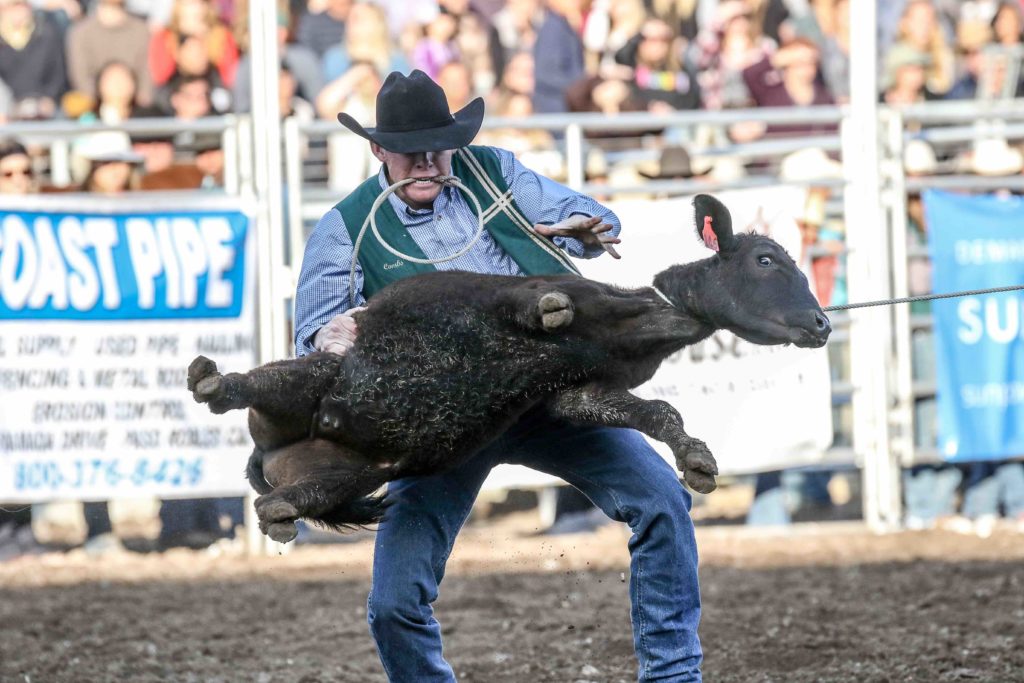
Calf roping isn’t just about roping. By Owen Main
Team roping is when a pair of cowboys rope a steer around the neck and back feet respectively. That’s about all I’ve got for this one, except to say roping a steer’s back feet seems like it would be harder (impossible) than they make it look.
Barrel racing is a women’s event that shows a horse’s agility as much as the rider’s. A horse must circle three barrels and bolt back toward the start. Since there isn’t a lot of time for a horse to get up to full speed, mud and dirt go flying at every turn. Think of it as a sort of shuttle drill for horse and rider. High intensity from the rider and powerful horse movements are the fun part of this event.
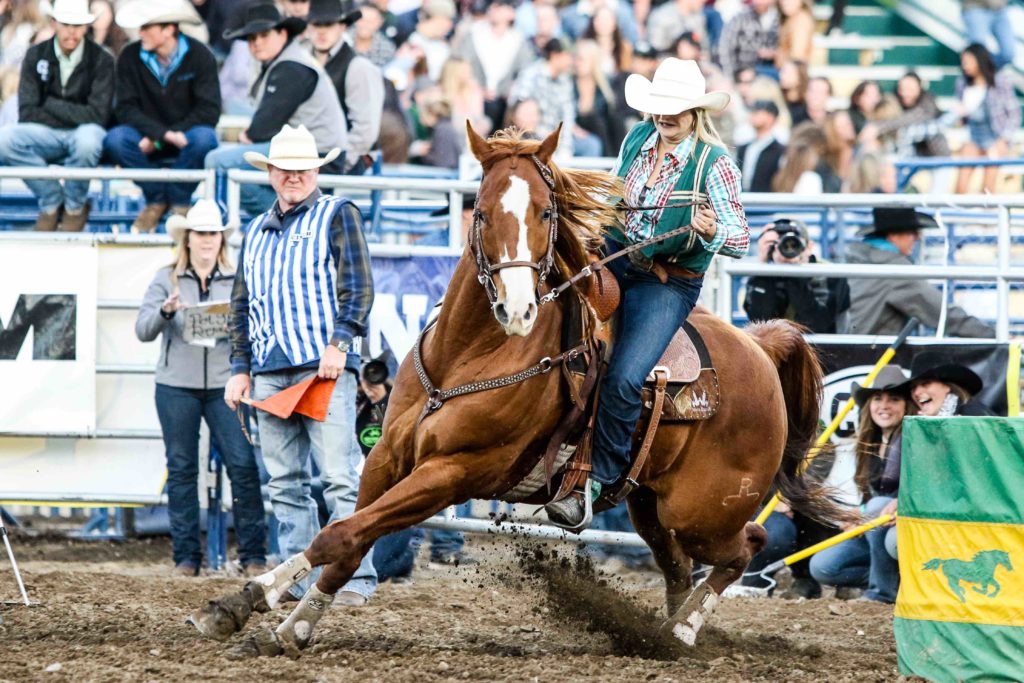
Saddle broncs give you a good idea of how much harder it is to do without a saddle, since that’s all you’ve seen up ’til this point. You really don’t want to be in the horses’ way once you jump off though.
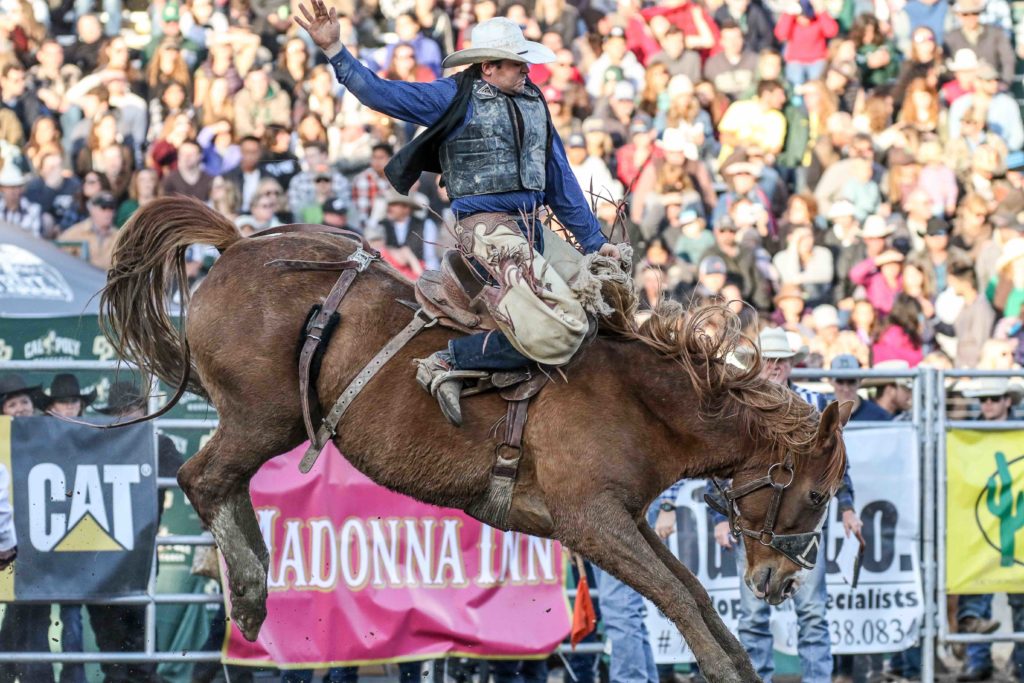
This is what I think of as a classic rodeo photo. The Bronc and rider. By Owen Main
The last event is definitely the most dangerous. Dudes strap on a helmet that looks like a cross between a deep-sea diving helmet and hockey goalie mask and get on the back of a 1,500 pound beast. One or two of those bulls wasn’t having ANY of it and threw the rider off immediately. When it goes well, it can be a sight to behold.
(My favorite photo from the evening below)
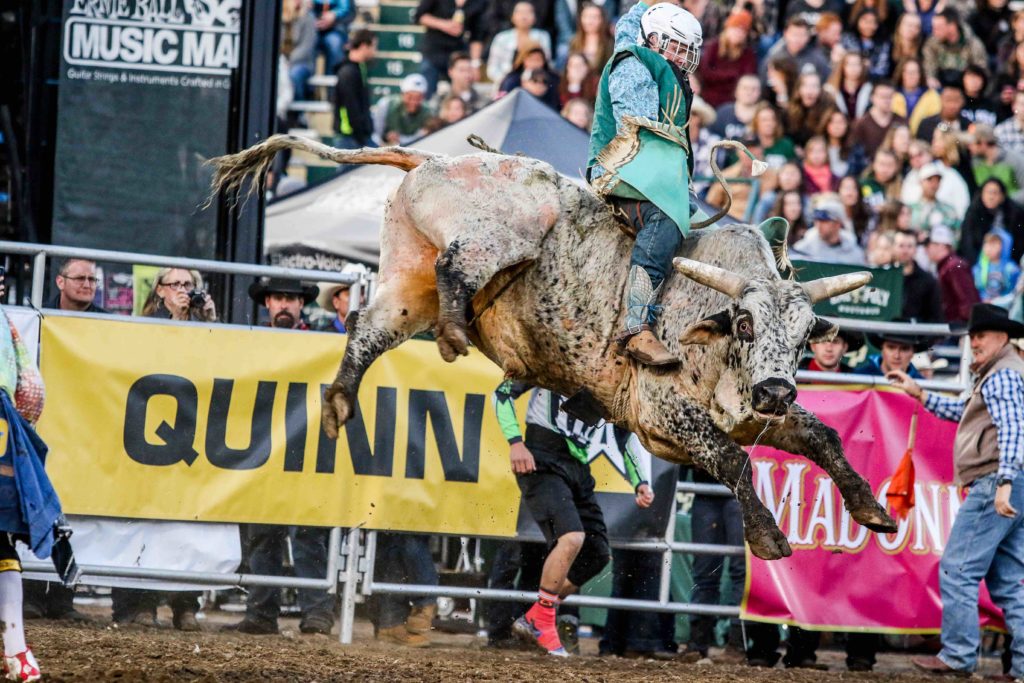
Bull riding ain’t no joke. This one had huge hops. By Owen Main
So the event itself is fast-paced. The announcers do a decent job of keeping everyone abreast of what’s happening in a drawl that is nearly auctioneer-level. When there was drama, you knew. When someone is struggling, he got the crowd to cheer. Preparation for the rodeo takes months and years and then it all goes down in eight to fifteen seconds. In that way, I guess a rodeo competitor is kind of like a sprinter.
After the rodeo was fun too. There were motorcycle jumpers and a few bands playing a concert.
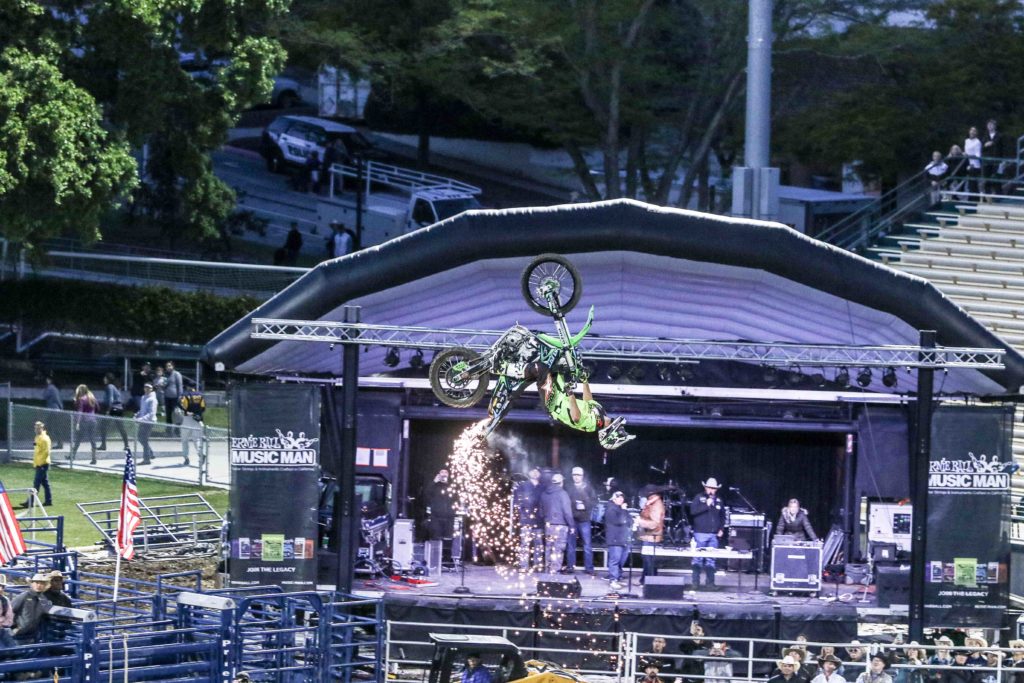
How can you argue with a motorcycle with fireworks coming out the back doing a backflip? Nothing but smiles from fans as the night wound down. By Owen Main
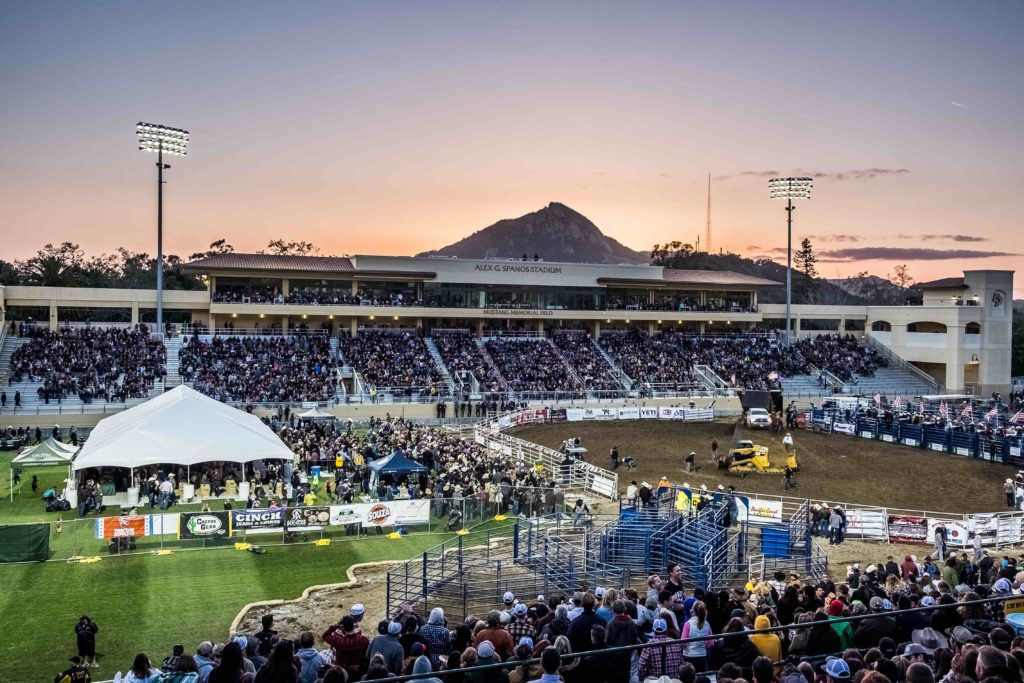
One last look at Spanos Stadium as the sun set on the first Poly Royal Rodeo there. By Owen Main
When they announced the rodeo in Spanos, my first thought was “uh oh.” The football field was drenched and slippery the last time they played a game there and unlike many football surfaces, soccer is also played there. In fact, there is supposed to be a soccer match at Spanos this Saturday — less than a week after the temporary rodeo surface/dirt was removed.
I stopped by on Monday and, by the looks of it, I don’t know if there will be ANY problem playing that soccer game on Saturday or the spring football game one week after that. The field looks a little yellow where it was covered, but it also looks like there isn’t any significant indentation or other problem that would cause the surface itself to not recover quickly. I guess the next few days will tell.
Cal Poly said all along that the filed conversion company was good. I was skeptical since it hadn’t been done at Spanos before, but it from a 100-yard-away visual check, it seemed OK. If I were the university or athletic department, it seems like there would be no reason not to have it at Spanos again next year. Rodeo coach Ben Londo alluded to as much in this Tribune article.
Did you go to the rodeo? What were your favorite parts? Is Poly Royal now the best college rodeo in the United States?
It’s another podcast episode! Cal Poly basketball teams are at the Big...
One of my favorite authors, Jeff Pearlman joins this edition of the...
Donovan Fields is one of the most joyous basketball players I’ve ever...
With the tournament more than underway and the sweet sixteen fast approaching,...
(Article by Luke “Loco” Johnson. Forgive website faux pas.) The genius of...
* Team Records accurate as of Friday morning, 8:39 A.M. The hyped hoopla...
